Employment Sketches

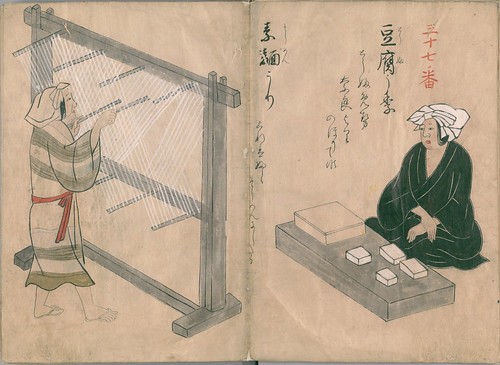
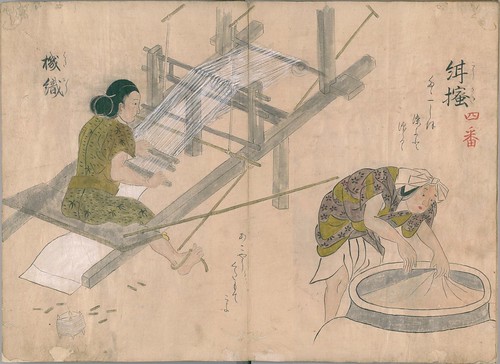
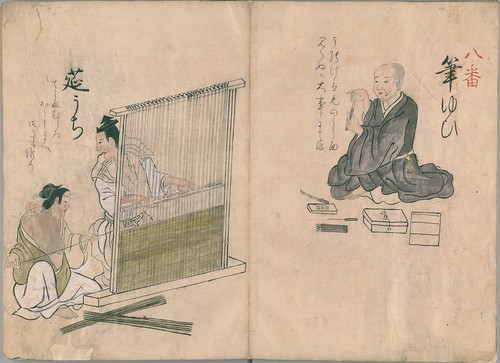
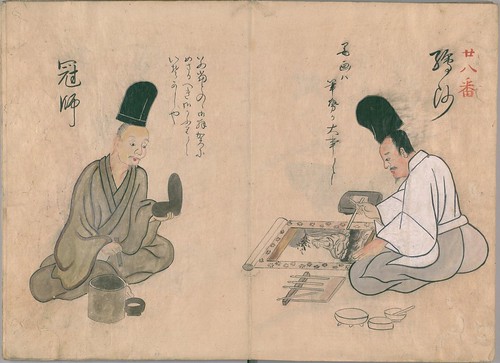
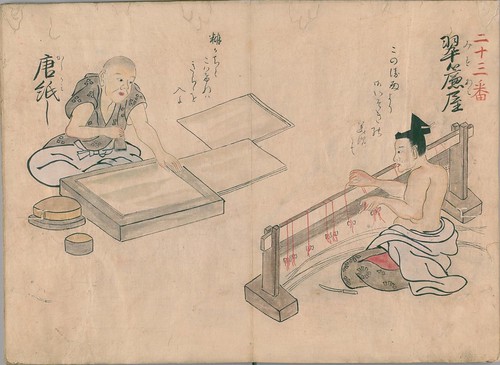
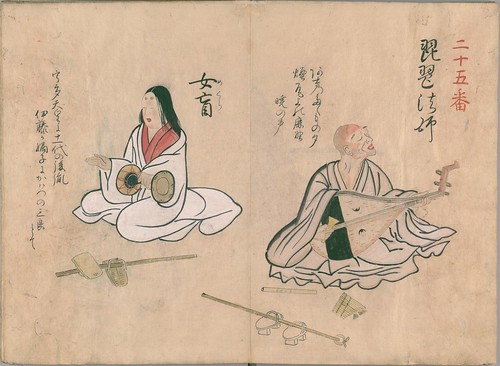

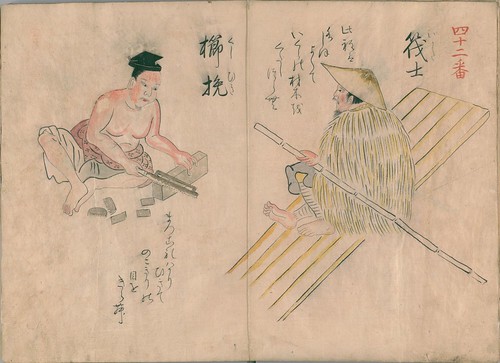
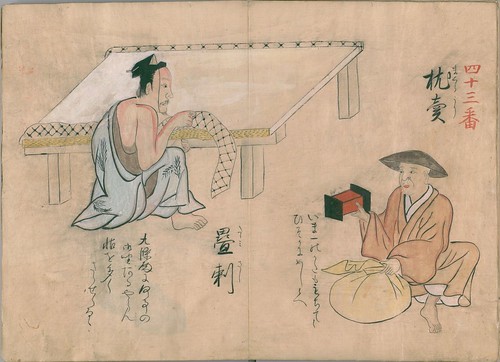
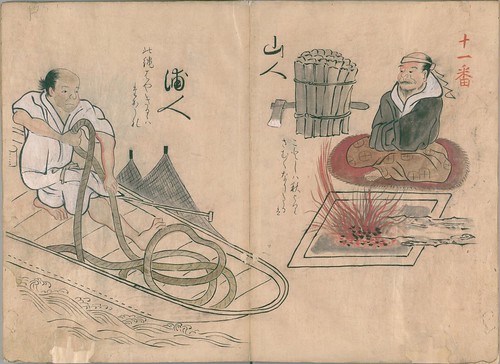
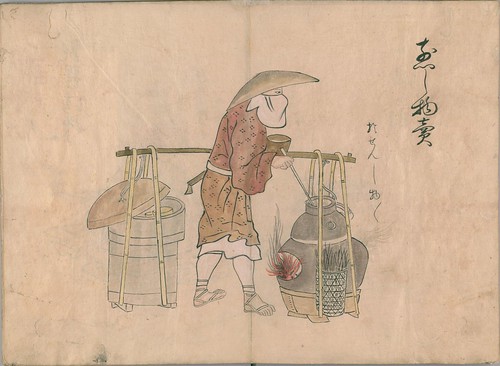

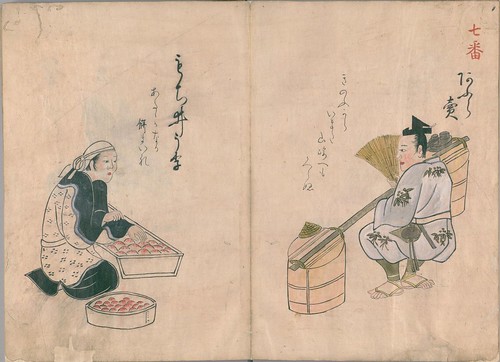
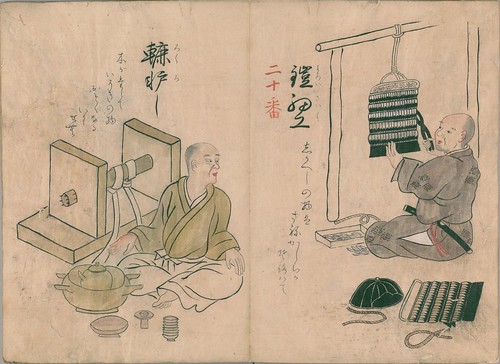
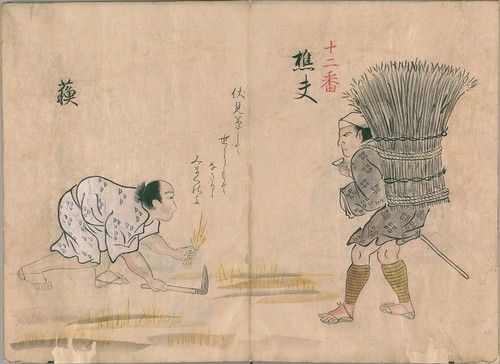
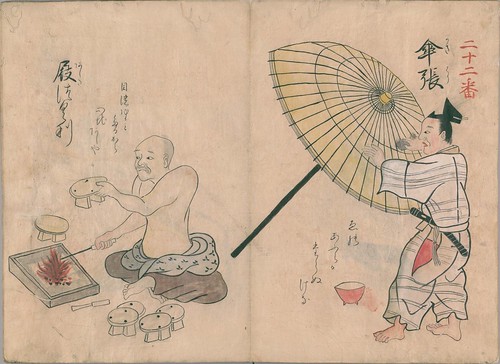
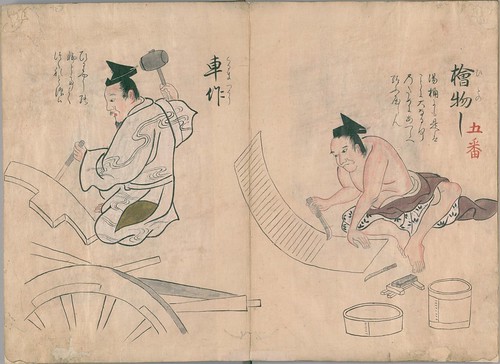

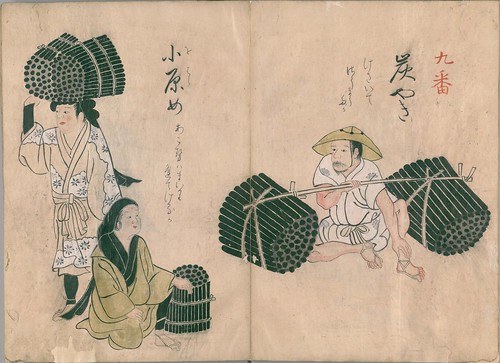
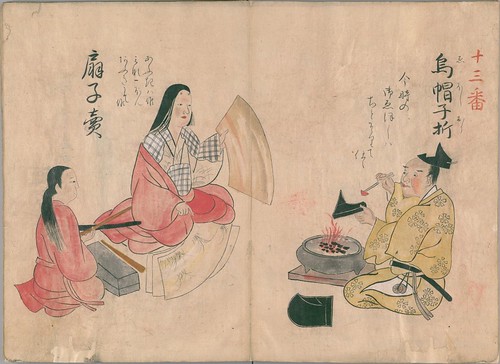
[these images have been very lightly spot-cleaned]
I'm able to offer approximately zero by way of background to the 3-book series from which these trades and craft images have been drawn. The 'folk' in the post title above is meant to infer that these characters were more likely from the countryside than the city and that many of the jobs tend towards the traditional, but that may all just be my imagination.
I think I can see musicians and painters and cooks and weavers and knife sharpeners and actors and mechanics and farmers and fishermen and assorted traders and travelling salespeople among many curious depictions whose job specifics escape me. If anyone is fluent in Japanese and can offer summary or translational commentary, please drop me a line (gmail --> peacay), or leave a comment below.
There is no date* recorded for these watercolour sketches. If I had to bet, I would say 1830, and most likely they were produced sometime between 1750 and 1880?? But then, I wouldn't be overly surprised to discover they were drawn earlier or later than that. I imagine the appearance of people in many of these sketches will have been a familiar sight well into the 20th century, and some workers in these trades probably look just the same today.
The series title - among the 'Japanese Classic Collection - translates to "Nin's mating song comb genus" AND "If a Craftsman" (noted separately). Well that makes it all clear!
*Jonathan Dresner writes to say that the book featured above is:
"dated 'Meiwa 6th year' which puts it about 1769. It's a lovely example of a very common kind of book for the period: miscellany or catalogs of common things."
He goes on to recommend 'Japan in Print: Information and Nation in the Early Modern Period' 2006 by Mary Elizabeth Berry because "it's all about book culture and early modernity".
**Rosemary emailed (in 2024): Thank you for posting the Japanese folk trade employment sketches! While that particular copy dates from 1769, the original is the Seventy-one Artisans Poetry Contest (七十一番職人歌合), art by Tosa Mitsunobu (1434-1525). The original images are black and white line drawings, so the color choices shown are all later interpretations.
The Japanese books depicting trades and crafts is hosted by the National Diet Library of Japan. The illustrations are in the first two books and I'm not sure how to link directly so that all three volumes appear in the left margin. Click around. The wide, light-coloured button on the left in the header region is for thumbnails.
Related posts: The Physiognomy of Trade :: Trades :: Jack of All Trades :: Driftnet Fishing :: Cries, Itinerants and Services :: Brothers in Craft :: Remarkable Persons :: Warsaw Street Types
Previously, in general: Japan.
Elsewhere: Twitter :: Pinboard :: Delicious.



















No comments :
Post a Comment
Comments are all moderated so don't waste your time spamming: they will never show up.
If you include ANY links that aren't pertinent to the blog post or discussion they will be deleted and a rash will break out in your underwear.
Also: please play the ball and not the person.
Note: only a member of this blog may post a comment.